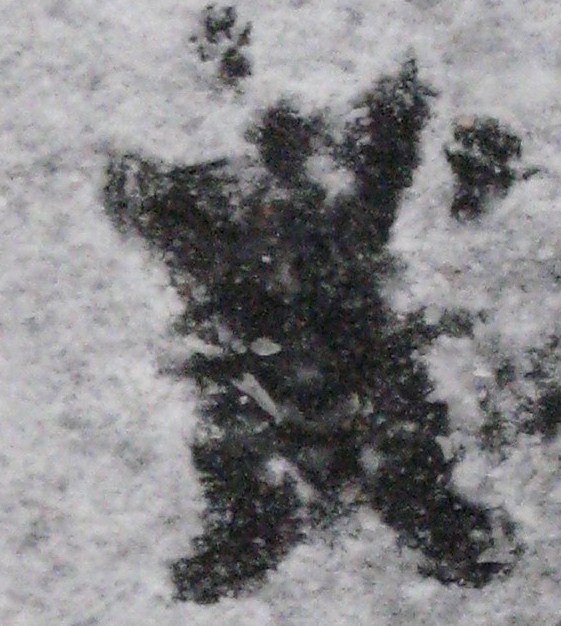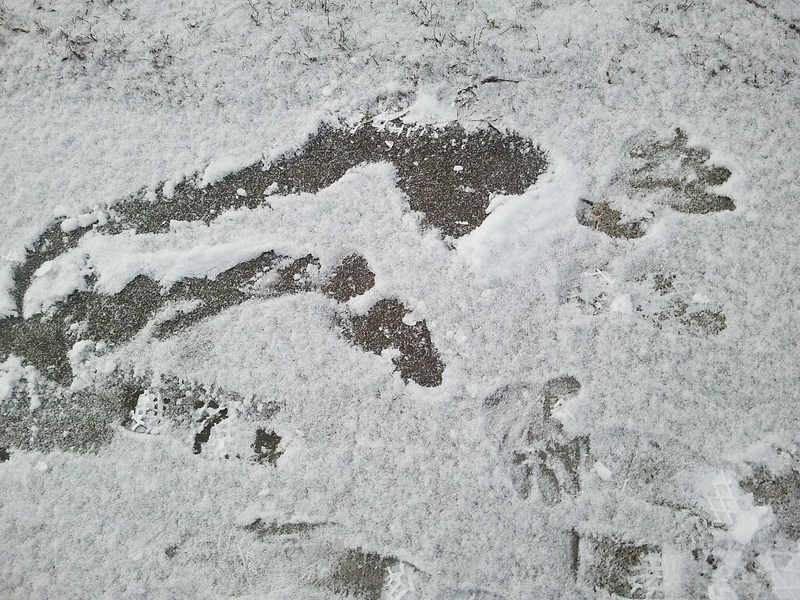 From “On Being the Right Size,” by J.B.S. Haldane: “You can drop a mouse down a thousand-yard mine shaft; and on arriving at the bottom, it gets a slight shock and walks away. A rat is killed, a man is broken, a horse splashes.”
From “On Being the Right Size,” by J.B.S. Haldane: “You can drop a mouse down a thousand-yard mine shaft; and on arriving at the bottom, it gets a slight shock and walks away. A rat is killed, a man is broken, a horse splashes.”
Recently, a couple of my friends have fallen. One, a woman, maybe 5’5″, maybe 130 pounds, tripped on a sidewalk, fell forward, and caught herself on her hands. Both wrists were shattered; she had surgery, now has casts on both arms with titanium plates holding both wrists in place, and will have surgery again to remove one of the plates, but the second plate is permanent and she thinks she’ll never be able to bend that wrist. The other, a man, maybe 5″8″, maybe 180 pounds, also fell while walking, and hit his head. Two days later, he was found to have a diffuse bleed into his right brain, was hospitalized, had another bleed, and somewhere in there, a stroke. His language, memories, and concepts are all fine, but his spatial orientation is off and now, a month after the fall, he’s still in a rehab hospital and will be for the foreseeable. Neither of these people fell down Haldane’s thousand-yard mine shaft; they fell only the lengths of their bodies. Both of them are going to be fine and functioning, though as Haldane says, they’re a little broken. And the fault lies completely with gravity.
 Years ago, I tried crossing a downhill street plated with glare ice (friction is one of our few weapons against gravity) and could no more walk across that street than I could fly. And for the first time, I understood what gravity was capable of. It doesn’t negotiate, it can’t be avoided, it runs this place like an absolute dictatorship.
Years ago, I tried crossing a downhill street plated with glare ice (friction is one of our few weapons against gravity) and could no more walk across that street than I could fly. And for the first time, I understood what gravity was capable of. It doesn’t negotiate, it can’t be avoided, it runs this place like an absolute dictatorship.
Gravity attracts, it pulls, it’s a force. The gravitational force on a 150-pound person is 686 newtons (isn’t that a nice name for gravitational units?), that is, a 150-pound pull. 1,000 newtons hits with a force of 225 pounds. The strength of the force depends on the relationships between mass, distance, speed, and time. This is just physics equations: the greater the mass, the shorter the distance, the faster the speed, the shorter the time, the stronger the force. When 5’3″, 130-pound woman falls, she hits the ground with around 9,000 newtons, for an impact of around 2,000 pounds. No wonder her wrists shattered. When a 5’8″, 170-pound man falls, he hits with around 25,000 newtons, for an impact of around 5,600 pounds. Worse yet, he fell at, say, about 5 meters per second, so that when he hit his head and his head stopped moving, his brain floating in his skull hit the skull’s side still going 5 meters per second. No wonder his brain bled.
Caveat: the numbers aren’t pure physics, they’re biomechanics and will depend entirely on the circumstances – whether the impact is on muscle or bone, whether the impact is on carpet or concrete, how the body reacts during the fall, and many other things I’m too shaken to look up (like toddlers falling out of chairs, around 6,000 newtons). I think, though, that the mitigating circumstances largely come down to the time of the actual impact.
That means we’re back to physics equations again: when you’re falling, the kicker is time. The longer the impact is stretched out, the lower those kilonewtons. You want to skydive, don’t land on stiff legs; land for as long as you can, bend your knees, then fold up and roll over to the side. You want to catch a water balloon without its breaking, catch it in midair and let your hands holding it drop with it. A little extra time makes a big difference. Muscle hits carpet more softly than bone hits concrete because the time of the impact is just that much longer.
So tense, turn, roll, do what you can. My friend who shattered her wrists put out her arms to soften her fall, and did this instinctively. I’ll bet nature, having lived with gravity for millenia, thought that while putting out her arms did her wrists no good, it lengthened the time before her head hit. Wrists, nature thinks, are more expendable than heads.
Now I need to stop thinking about friends in terms of their physics. But gravity — such a bitch.
________
The conversions of falls into kilonewtons came from a biomechanics paper simulating real falls of real people and another one on toddlers falling.
Photos: squirrel fall – elycefeliz; person fall – jma.work
And while you are thinking about the brain hitting the inside of the skull at 5 meters per second, look up “coup contrecoup” if you want to be doubly shaken up. Or to phrase it differently, it doesn’t stop with the first impact.
You mean like bathtub sloshing, don’t you, Old Geezer. I’m not looking it up.
“I’ll bet nature, having lived with gravity for millenia, thought that while putting out her arms did her wrists no good, it lengthened the time before her head hit. Wrists, nature thinks, are more expendable than heads.”
Similarly, I remember reading once (how’s that for a source!?) about the theory that our limbs actually evolved to be relatively breakable, because a bone breakage prevents the shock wave from travelling through the body to the vital organs.